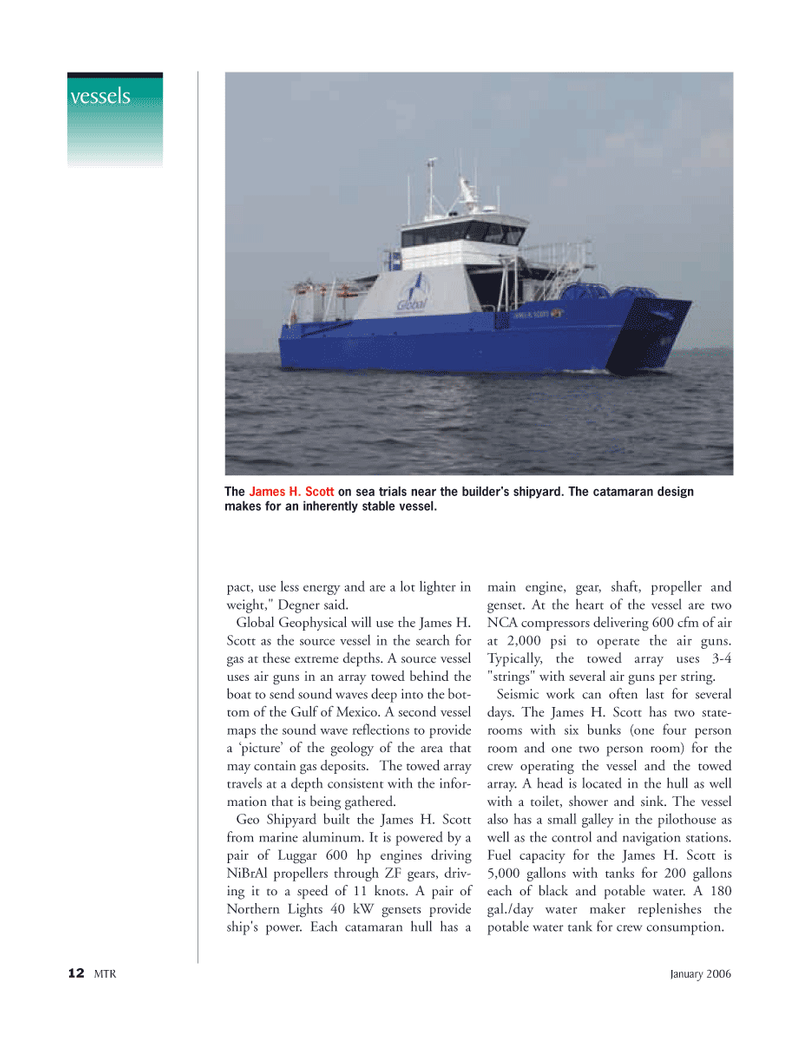
Page 12: of Marine Technology Magazine (January 2006)
Marine Science Institutions
Read this page in Pdf, Flash or Html5 edition of January 2006 Marine Technology Magazine
12 MTR January 2006 vessels pact, use less energy and are a lot lighter in weight," Degner said.
Global Geophysical will use the James H.
Scott as the source vessel in the search for gas at these extreme depths. A source vessel uses air guns in an array towed behind the boat to send sound waves deep into the bot- tom of the Gulf of Mexico. A second vessel maps the sound wave reflections to provide a ‘picture’ of the geology of the area that may contain gas deposits. The towed array travels at a depth consistent with the infor- mation that is being gathered.
Geo Shipyard built the James H. Scott from marine aluminum. It is powered by a pair of Luggar 600 hp engines driving
NiBrAl propellers through ZF gears, driv- ing it to a speed of 11 knots. A pair of
Northern Lights 40 kW gensets provide ship's power. Each catamaran hull has a main engine, gear, shaft, propeller and genset. At the heart of the vessel are two
NCA compressors delivering 600 cfm of air at 2,000 psi to operate the air guns.
Typically, the towed array uses 3-4 "strings" with several air guns per string.
Seismic work can often last for several days. The James H. Scott has two state- rooms with six bunks (one four person room and one two person room) for the crew operating the vessel and the towed array. A head is located in the hull as well with a toilet, shower and sink. The vessel also has a small galley in the pilothouse as well as the control and navigation stations.
Fuel capacity for the James H. Scott is 5,000 gallons with tanks for 200 gallons each of black and potable water. A 180 gal./day water maker replenishes the potable water tank for crew consumption.
The James H. Scott on sea trials near the builder's shipyard. The catamaran design makes for an inherently stable vessel.
MTR#1 (1-16).qxd 1/9/2006 2:12 PM Page 14

 11
11

 13
13
